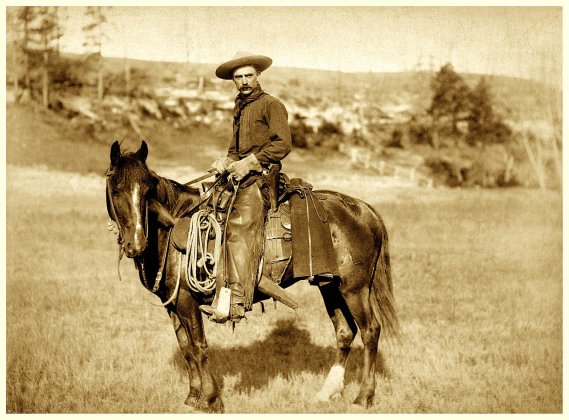Texas cowboy shared his memories of life on the trail
An eyewitness account by a man who lived it
By Murray Montgomery
Staff Writer
It seems that every time I start researching material for this column, I think maybe I was born 100 years too late. Then I rethink all that because I really don’t figure I’m tough enough to have lived back then. Kind of makes me wish that there were time machines available so I could go back to early Texas just for a few hours.
However, this is the story of a man who did live back then, and his memories were written down. Jeff Connolly was born at Prairie Lea in 1863 and moved to Lockhart in 1876.
We know all this because Connolly’s story, and many others, can be found in the book The Trail Drivers of Texas by J. Marvin Hunter. This publication is a treasure trove of information about trail drives, ranches, and cowboys. It contains many narratives about the people who were responsible for building the cattle industry.
I am going to share some of Jeff Connolly’s memories in this column – there will be many quotations here as I attempt to give the reader a sense of what he remembered in his own words. The narrative in Hunter’s book is quite lengthy and there were several misspelled words. But you should get the general idea of what life as a cowboy was back then.
Connolly wrote that one of his first trail-driving jobs was working for Capt. King of Nueces County in 1880. “I was on the trail that year about three months and drew a salary of $1.50 per day and board was furnished me.”
Throughout his narrative, Connolly recalls his experiences on the cattle drives. “In 1884 I drove a herd of horses from Banquete in Nueces County, for a man by the name of Frank Byler. At the edge of Lockhart, where we camped that night, and from where we started to town next morning we were arrested by Sheriff Allie Field for trespassing.”
In the trespassing episode, the men needed $50 to pay the fine. It so happened that Connolly had a friend in Lockhart who loaned them the money. The drive continued and there was no more trouble until they reached Baxter Springs, Kansas. “The first night we were camped on the state line we had a big stampede,” said Connolly.
The adventure continued and the cowboy recalled what he was doing the next year, “In 1885 I drove cattle with Bill Jackman of San Marcos, the herd belonging to Hez Williams and Bill Goode of Kyle. This herd was put up at Rancho Grande, in Wharton County, by Bob Stafford of Columbus.”
On one of the drives, the old cowboy recalled that their wagons all caught fire. He said they were only able to save their coffee and a little meat. He wrote about being cold in Colorado and crossing the plains.
There were those times when Indians would demand to be given cattle to allow the herds to pass safely through their land. Connolly recalled one of those occasions. “When we reached the Wichita Mountains, in Indian Territory, the Indians met us there and wanted beef. I had a big black range steer I had picked up in Texas, and when I got up in the roughest part of the mountains I cut this steer out and told them to go after him. The steer outran them and got away and directly I saw them coming back, one after another as they traveled, but without any beef.”
As I read about Jeff Connolly’s adventures on the cattle drives, it was like watching the television series “Lonesome Dove” all over again. I recall the scene where a man was hanging in a tree.
Connolly saw something similar. “We were looking for a place to camp, when we came across a little clump of trees where we saw a man hanging with a sign around his neck that said ‘Death to the one who cuts him down.’” To make a long story short, they didn’t cut him down and went on to look for another place to camp.
In conclusion, this narrative is just one among numerous accounts paying homage to the tenacious individuals who sustained themselves by supplying beef to a famished nation in the aftermath of the Civil War.


